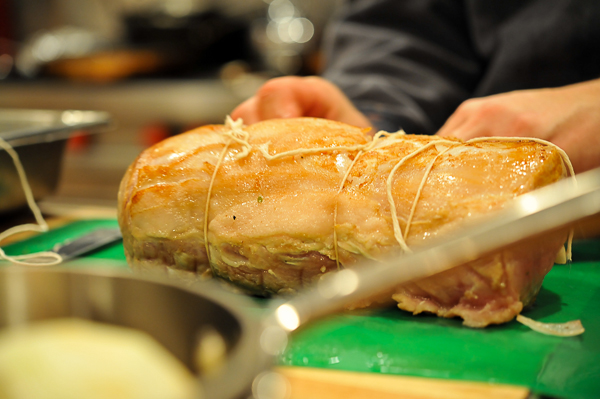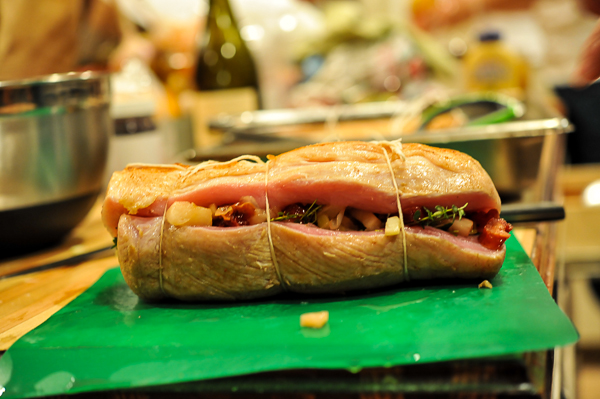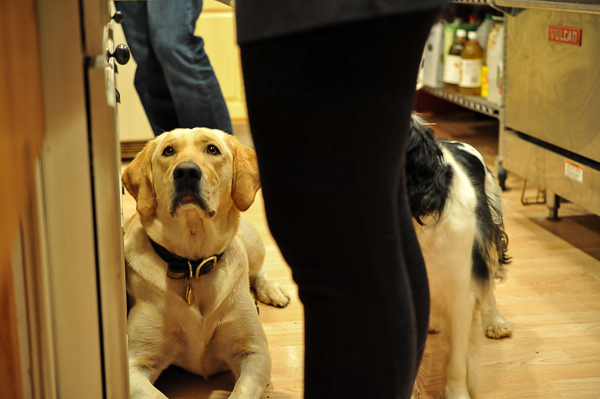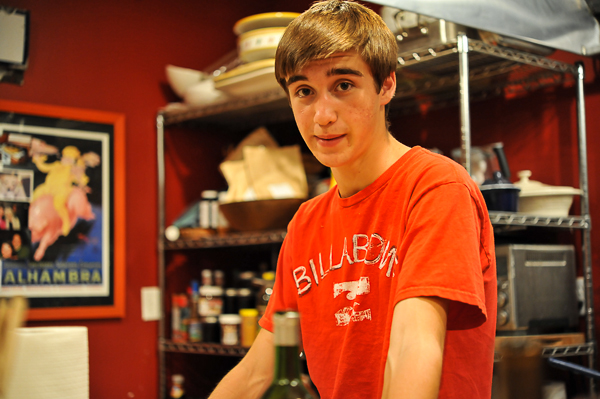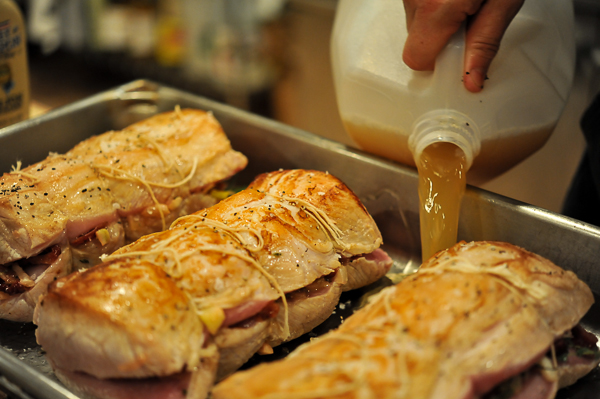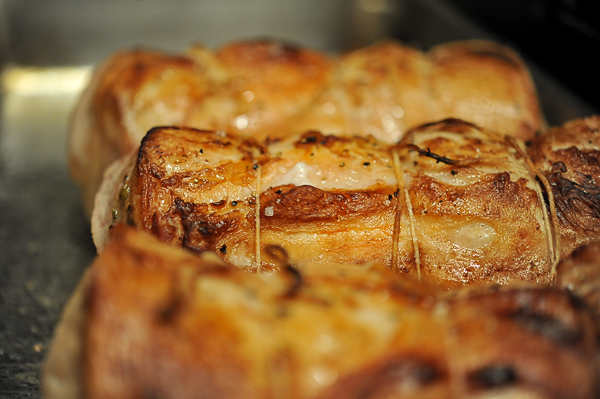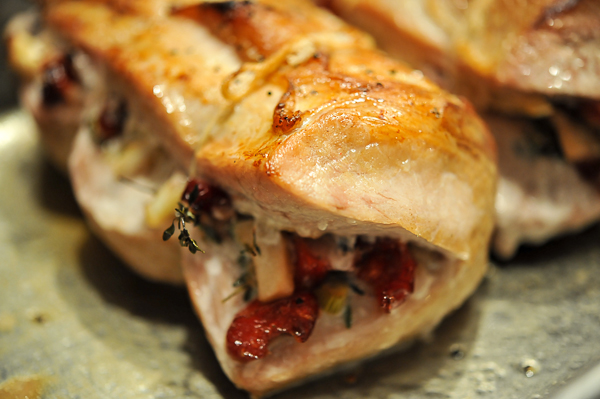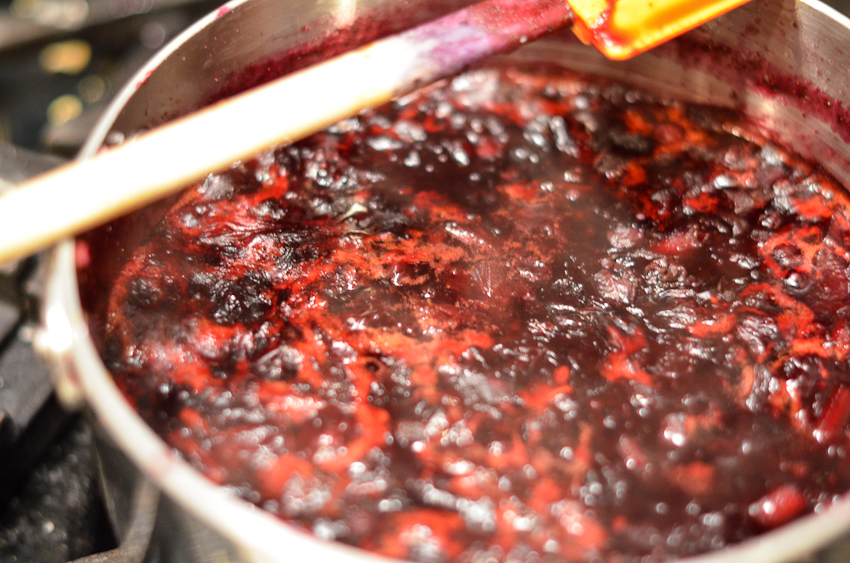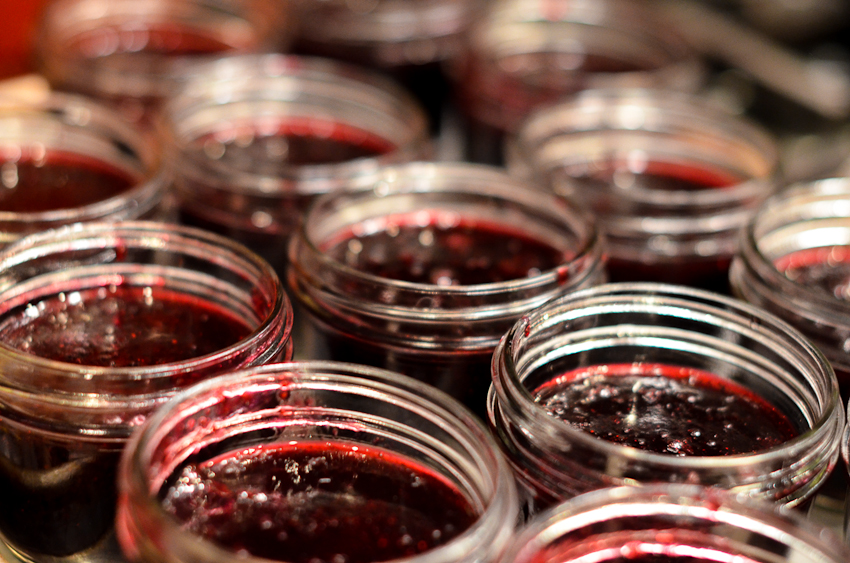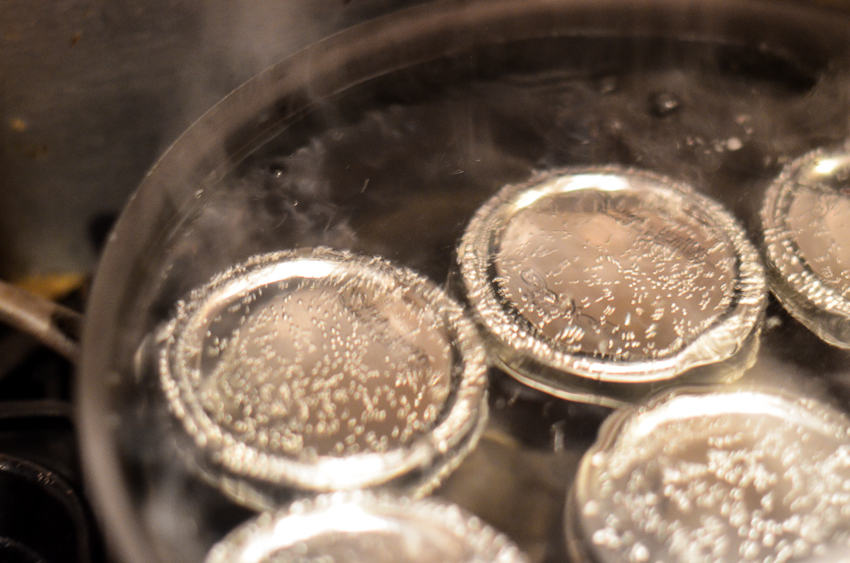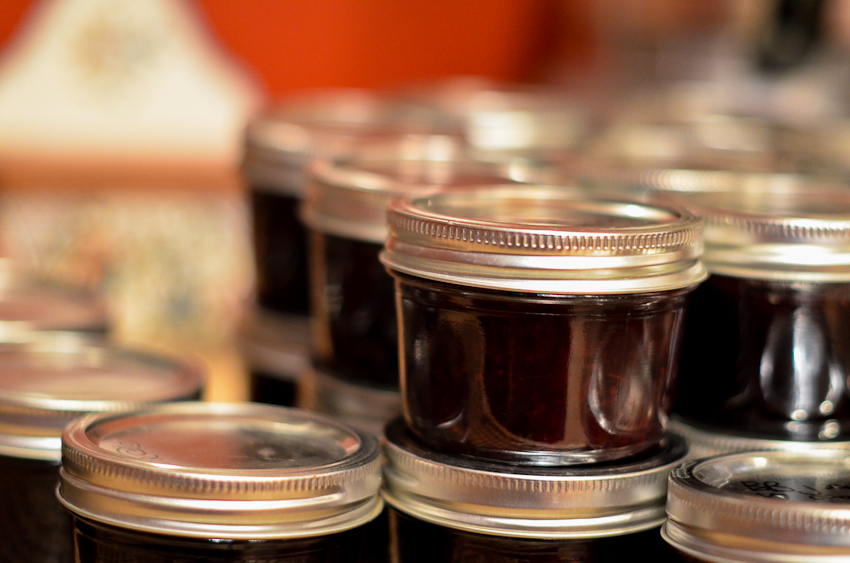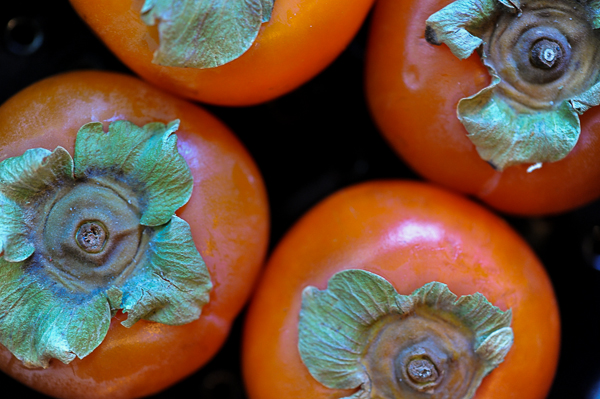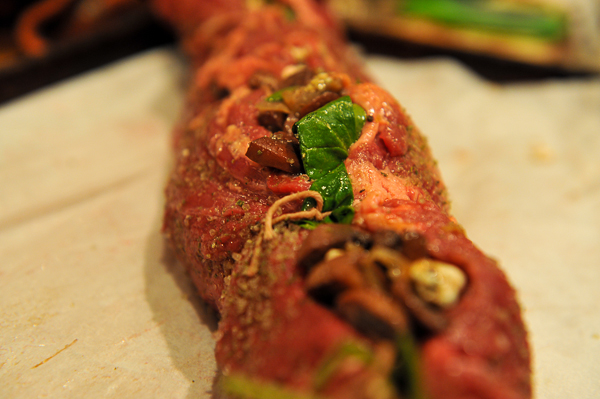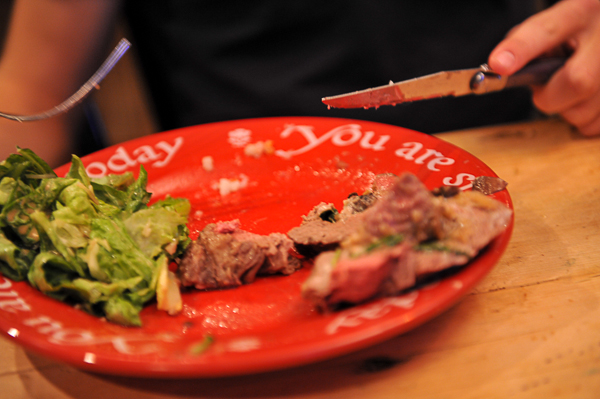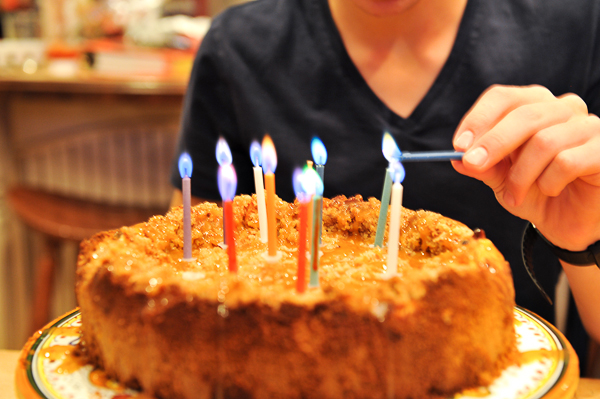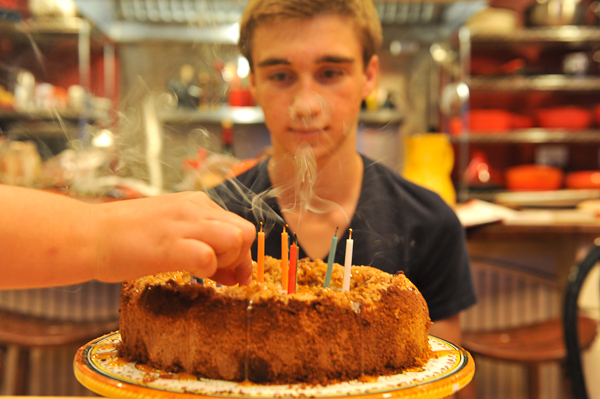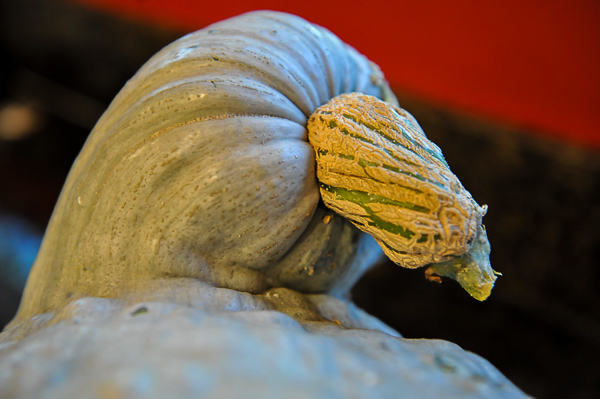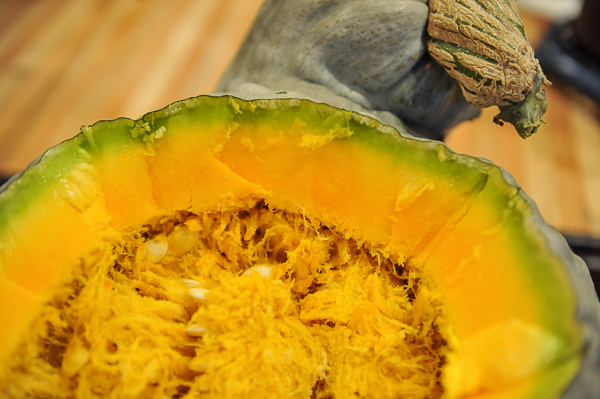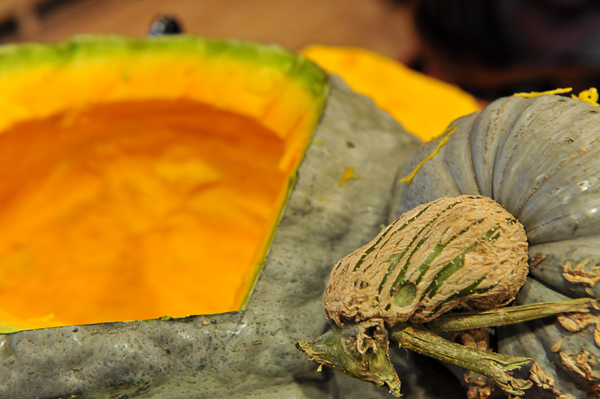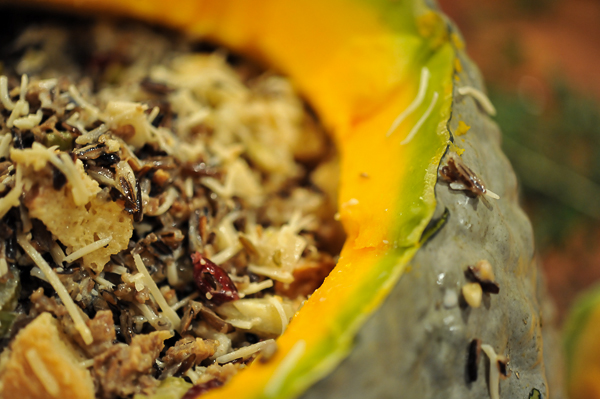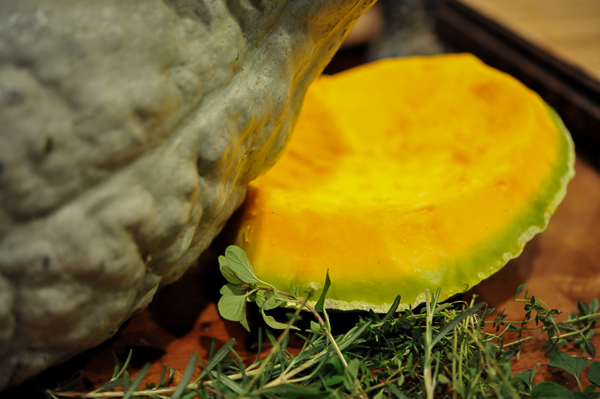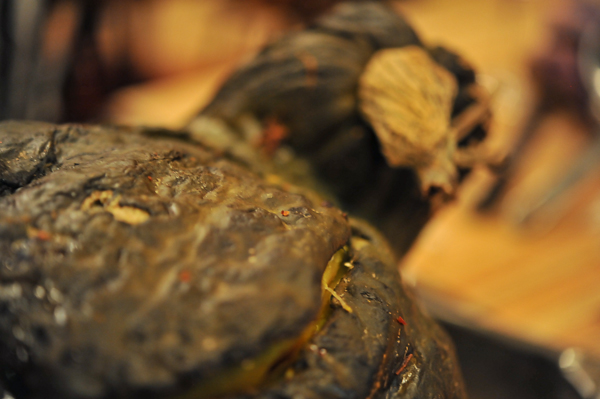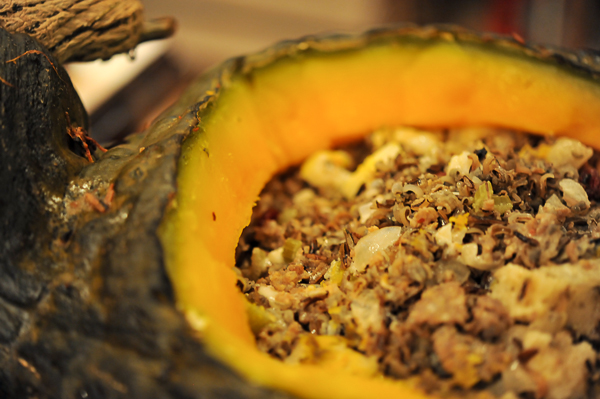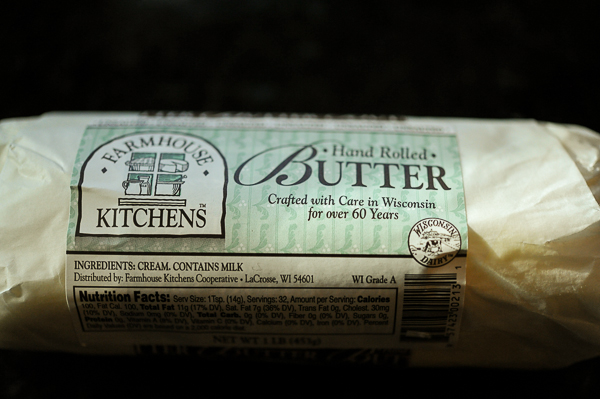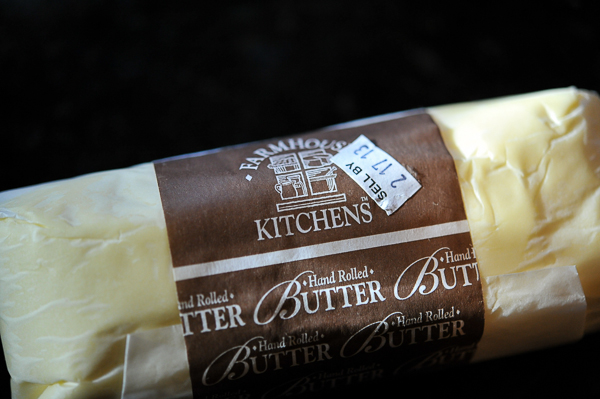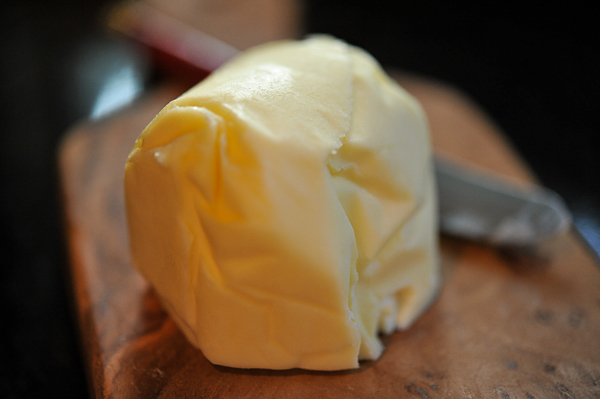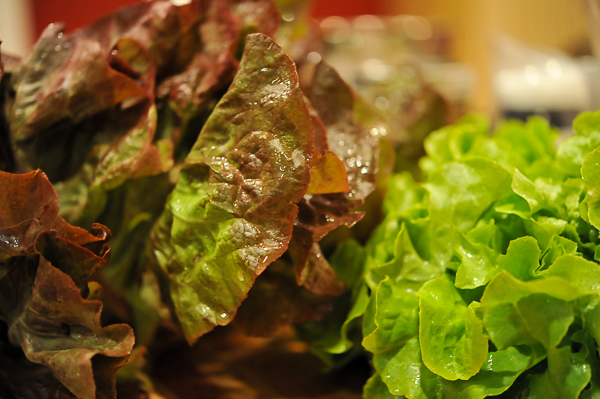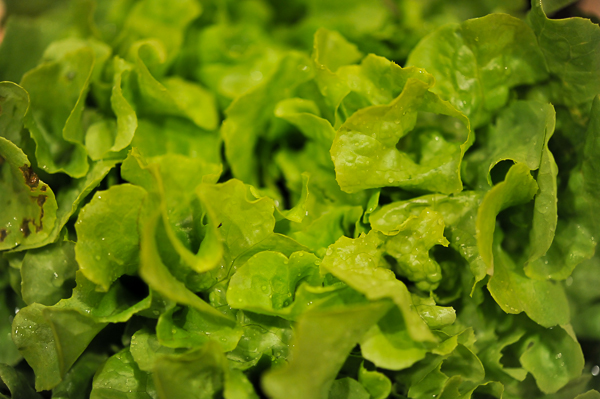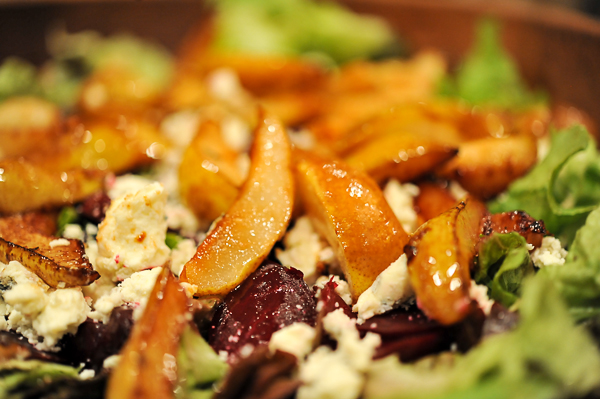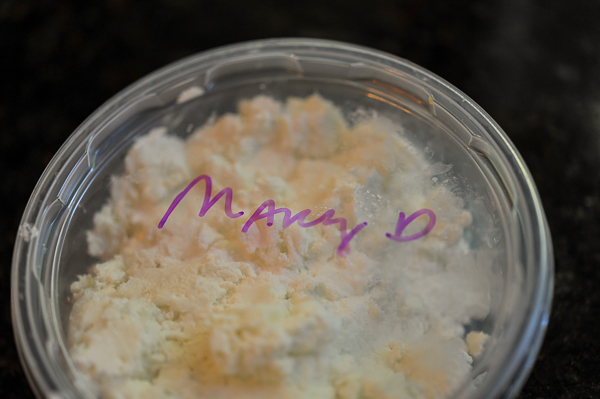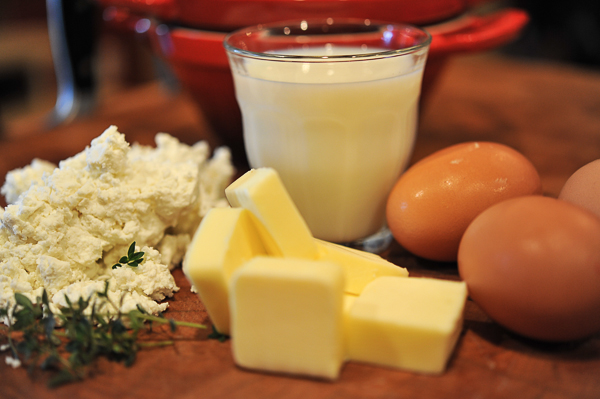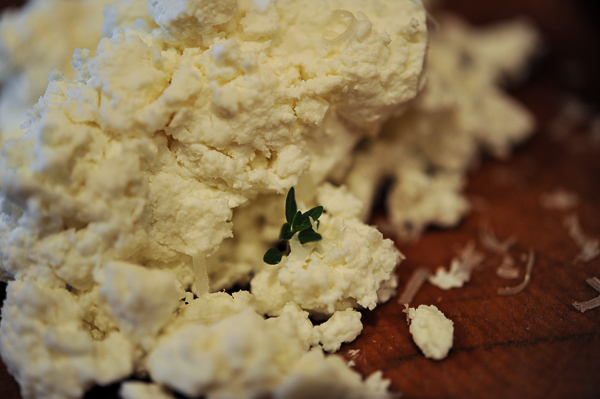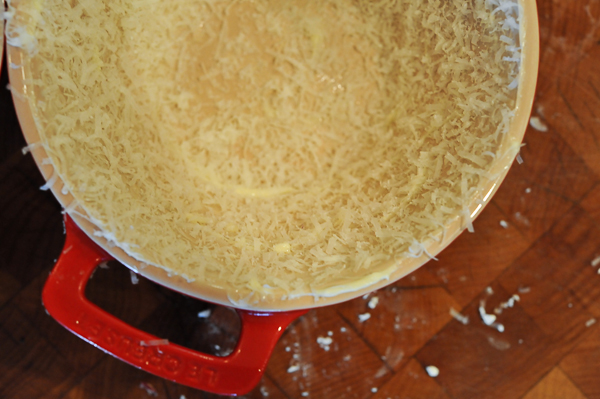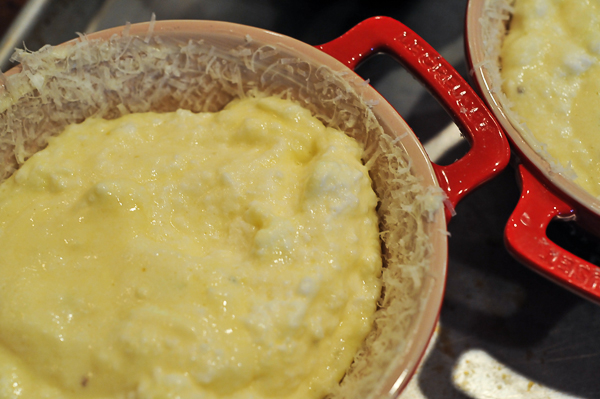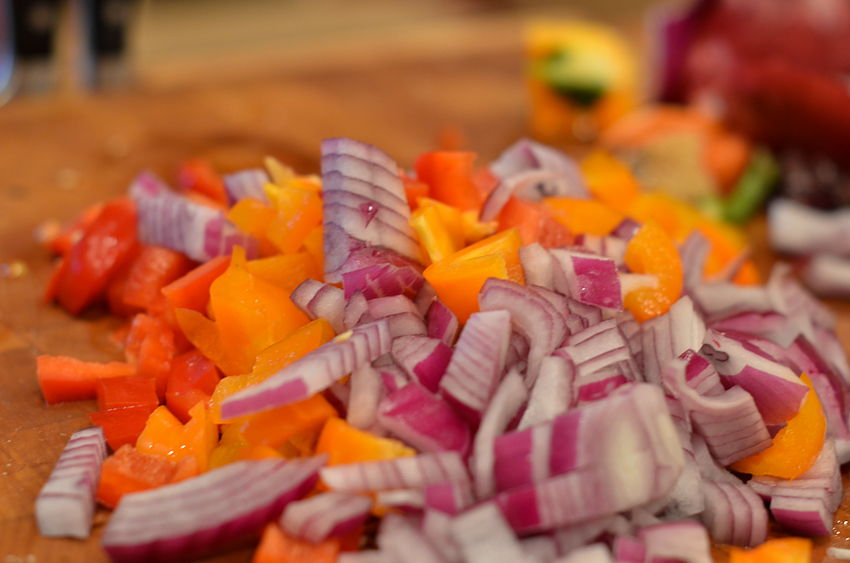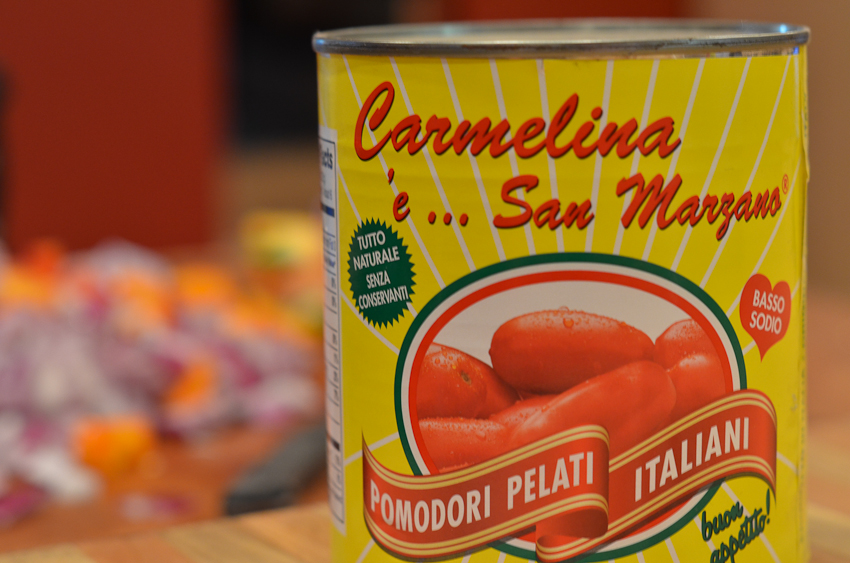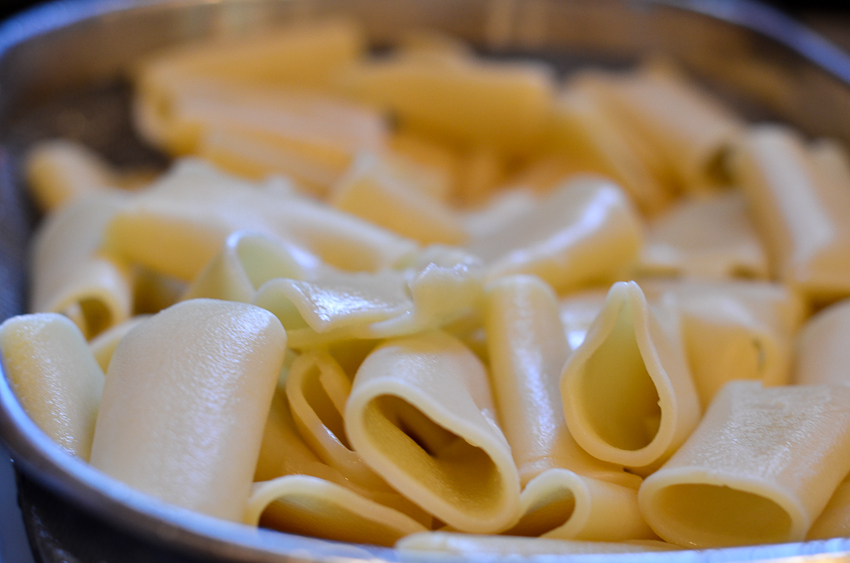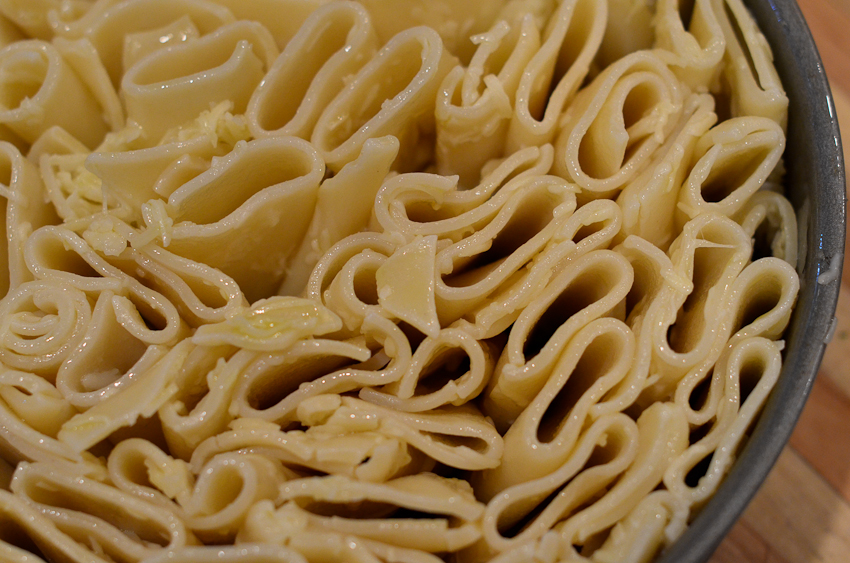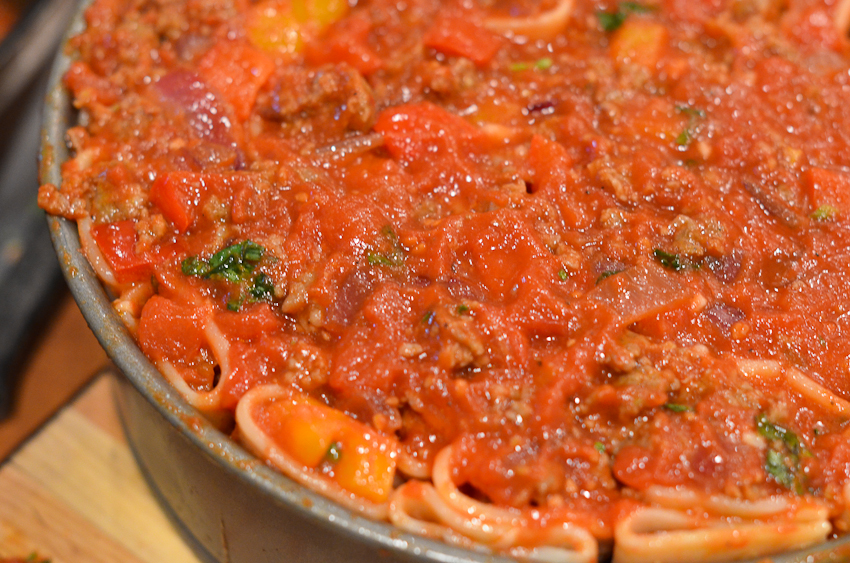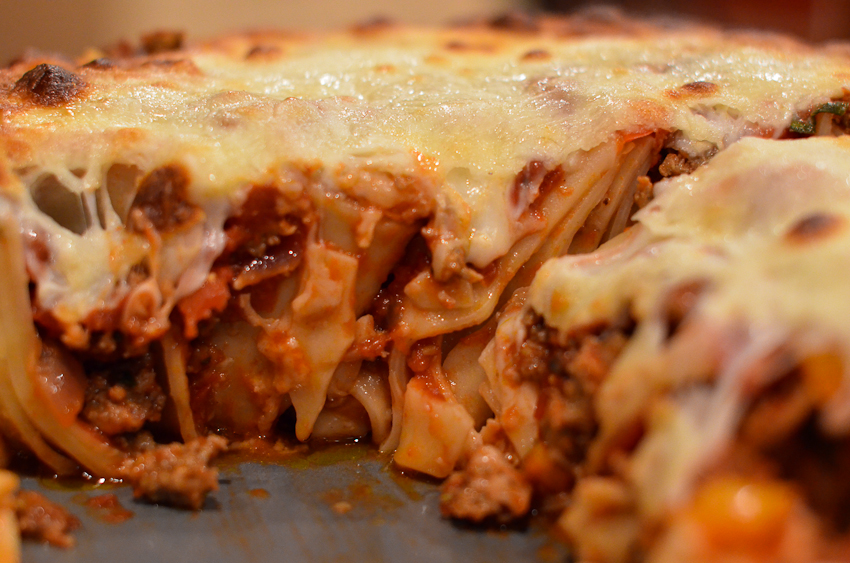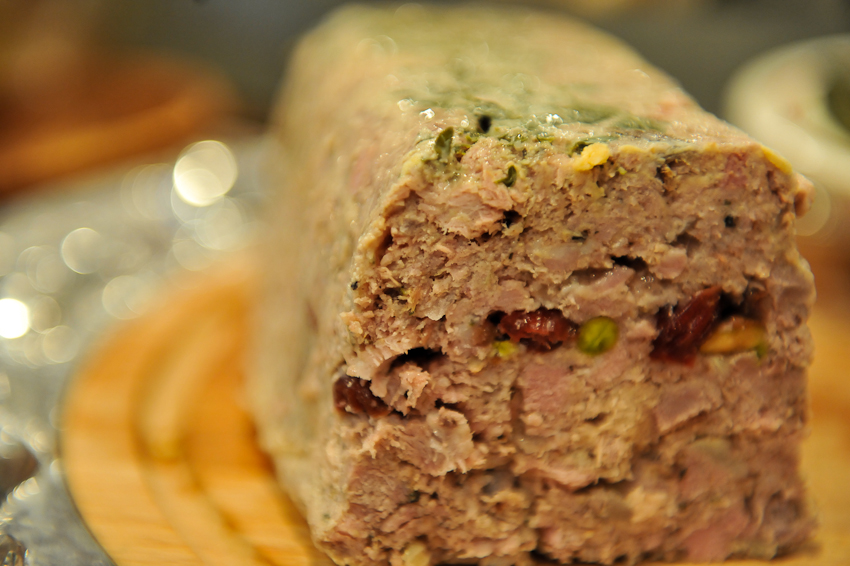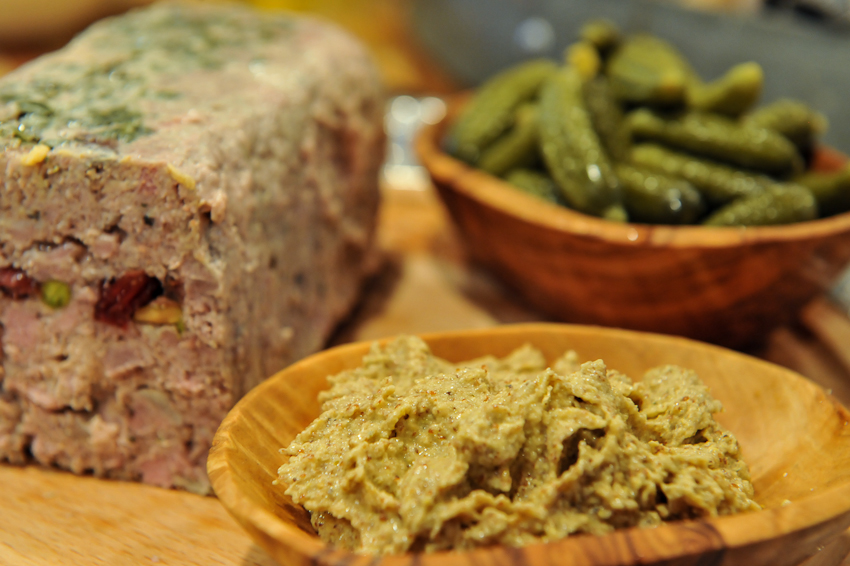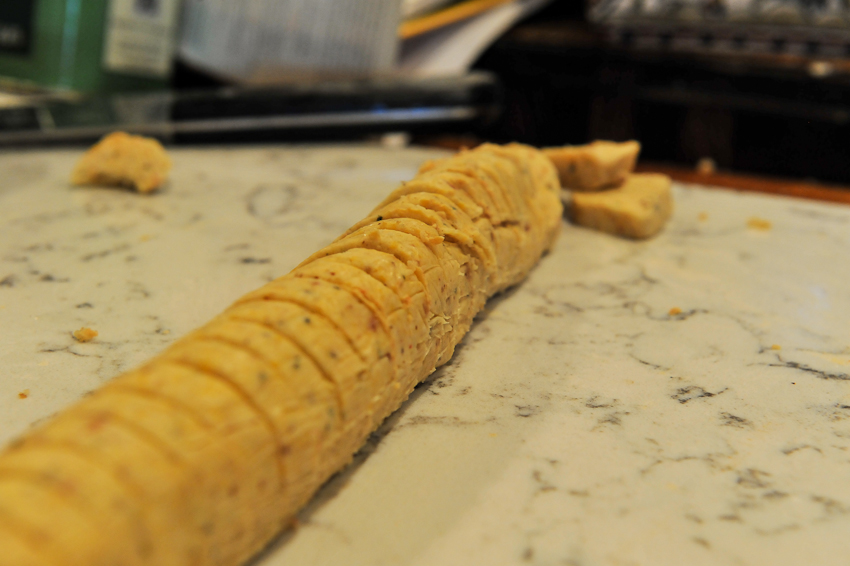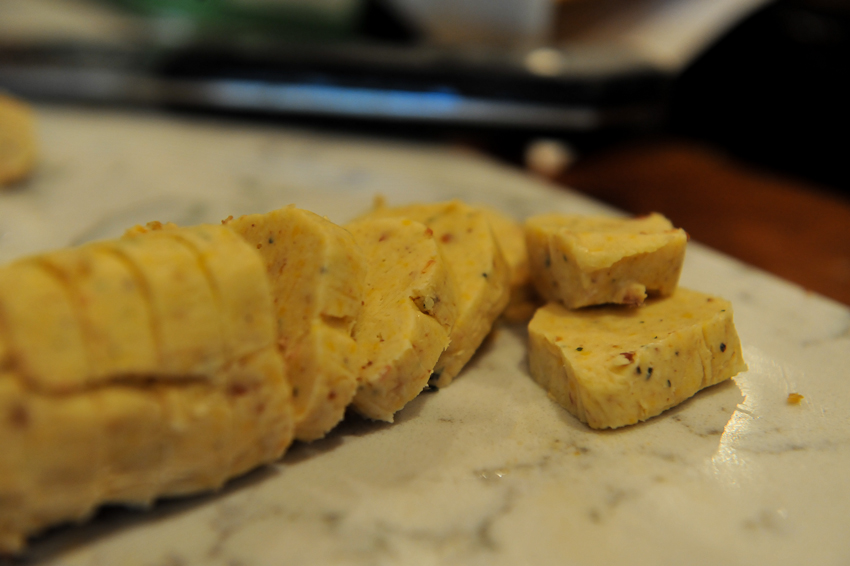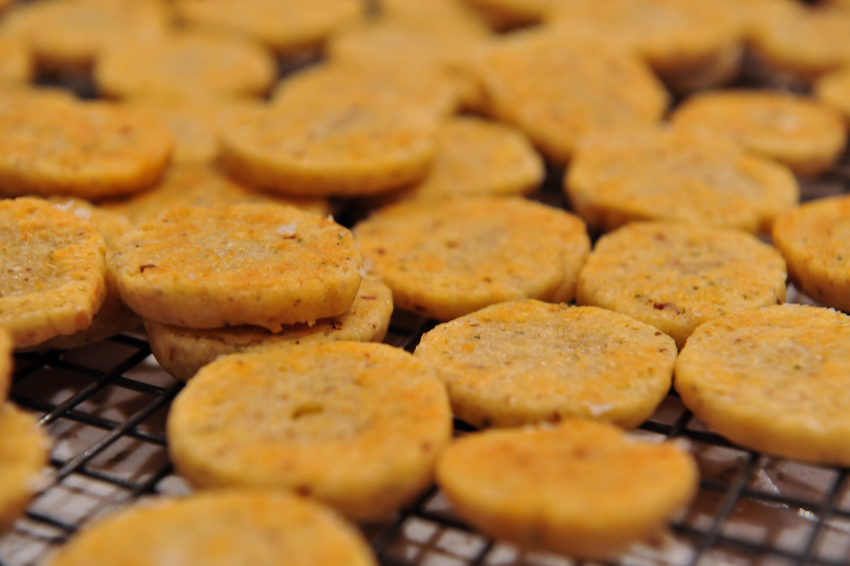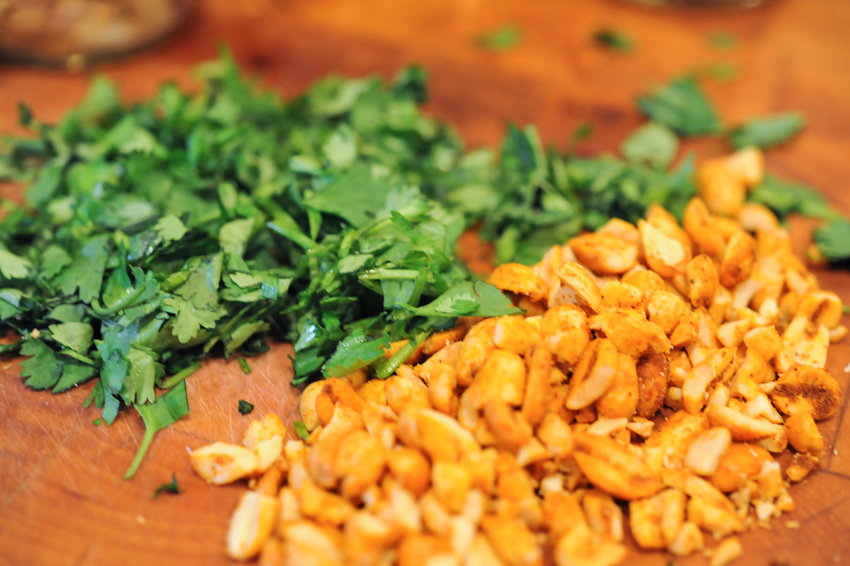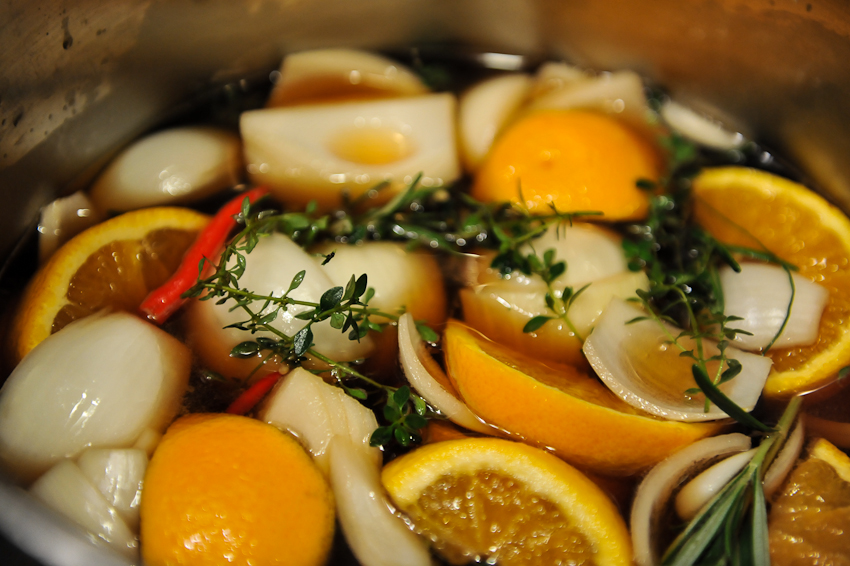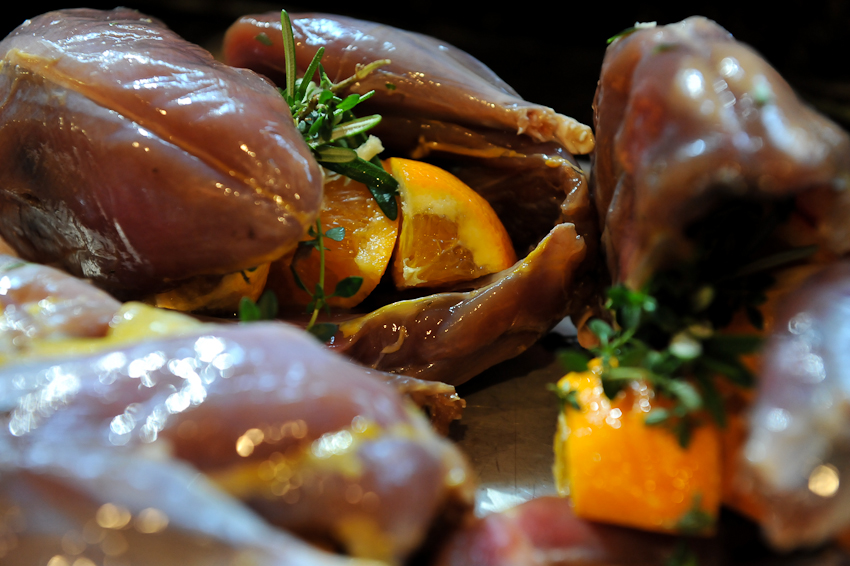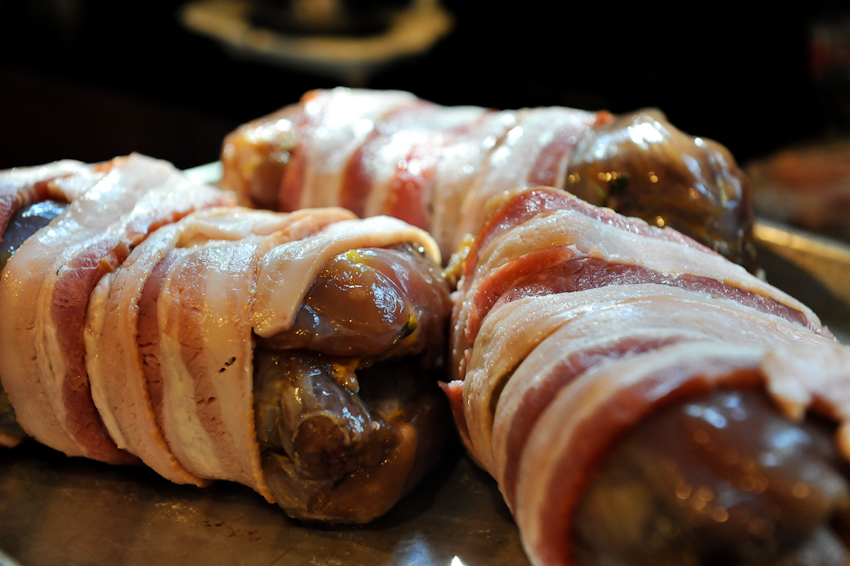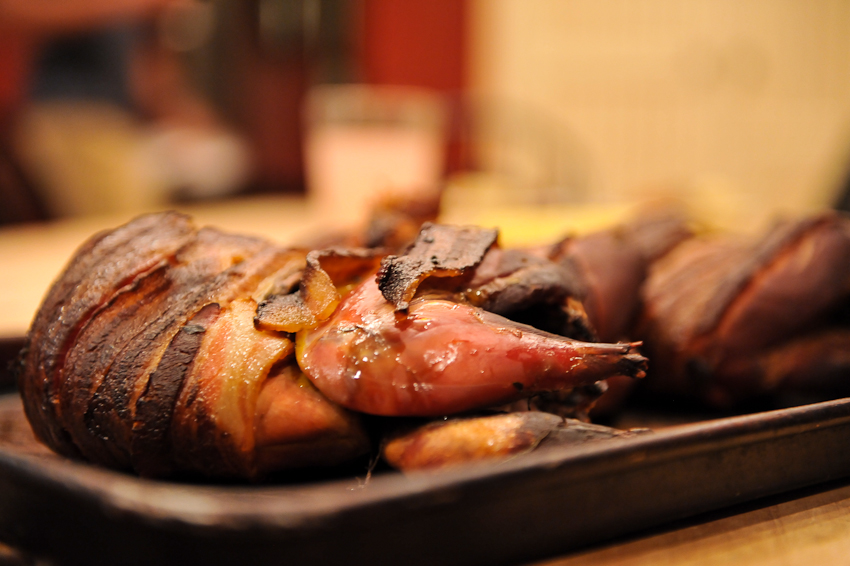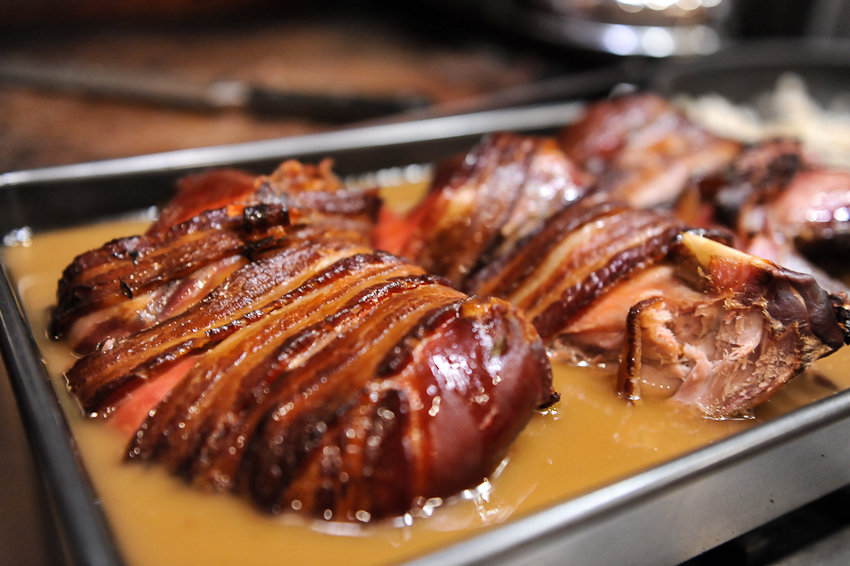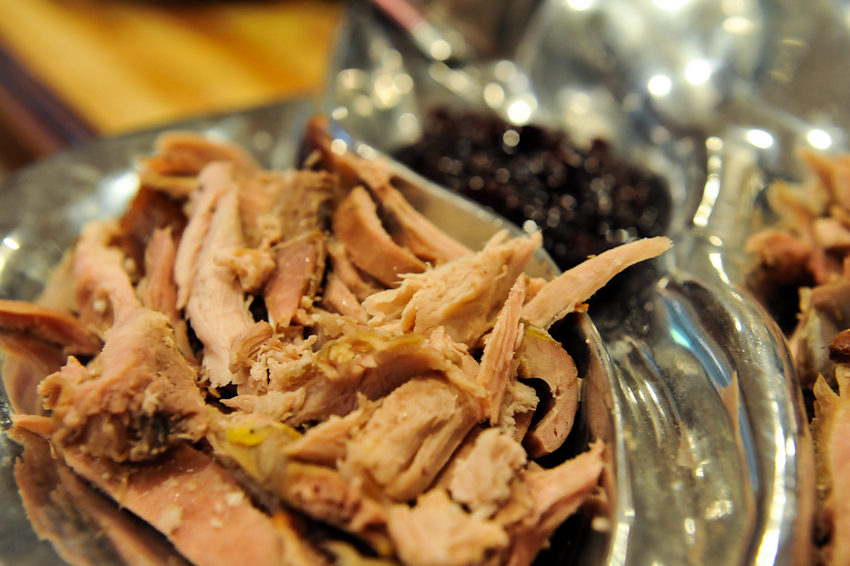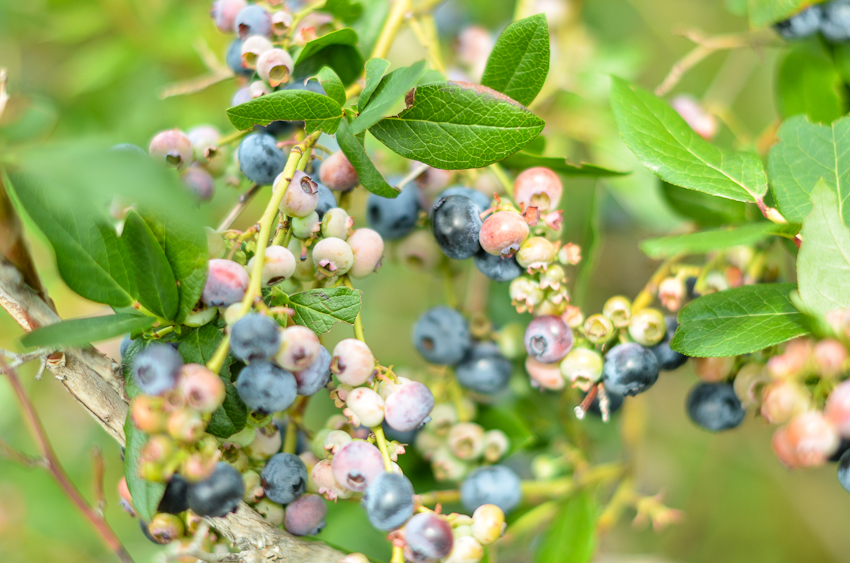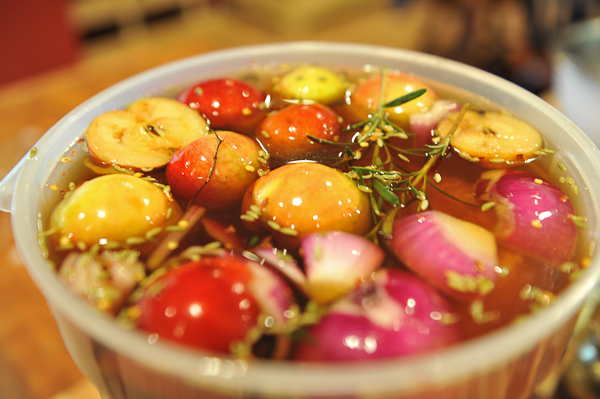
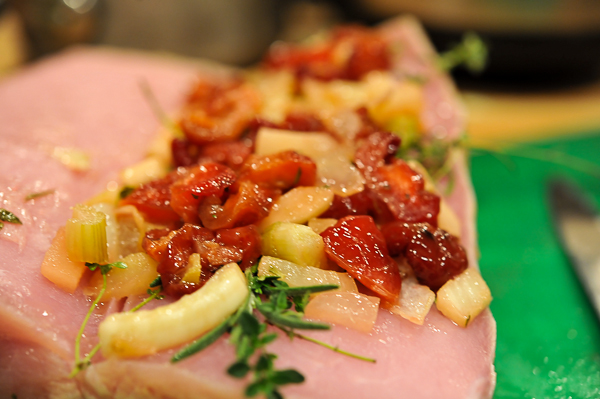 I'm starting to see a trend in my dinner choices— a stuffing trend. There's something about shorter days, falling leaves and fires in the hearth that makes me want to start chopping all sorts of good things, stuffing and tying up delicious packages of beef, squashes and pork. While I miss the fresh vegetables and herbs of summer, I am more of a fall/winter kind of cook— braises, roasted root vegetables and soups are my kind of thing.
I'm starting to see a trend in my dinner choices— a stuffing trend. There's something about shorter days, falling leaves and fires in the hearth that makes me want to start chopping all sorts of good things, stuffing and tying up delicious packages of beef, squashes and pork. While I miss the fresh vegetables and herbs of summer, I am more of a fall/winter kind of cook— braises, roasted root vegetables and soups are my kind of thing.
As I was busy tying my roast the wrong way (see the right way here), Julie took the camera and captured a few behind the scenes photos. I have a rule (not particularly well enforced) that kids, dogs and husbands need to stay on the other side of the island, away from the stove and me. I tend to get distracted with talking, drinking wine or making dinner and don't need to add watching out so I don't burn, trip over or hit with a pan any beloved members of my family. As you can see, no one listened and I have to admit, I love having the boys (canine and human) in my space. As for tying the roast, I have terrible eye/hand coordination and hitch knots (or any kind of knot except the one I so artfully used on this roast) are way above my skill level.
Center cut pork loin is a lean piece of meat and benefits greatly from a flavorful brine and some juice, broth or wine in the roasting pan while it's cooking. I used a brine with apples, maple syrup and apple cider because it complemented the stuffing beautifully. It was a good start to a fall and winter's worth of stuffed meals.
Pork Loin Stuffed With Fruit, Herbs & Onion
Brine 6 cups water 2 cups apple cider 2/3 cups kosher salt 1/2 cup maple syrup 3 apples, cut in half 2 onions, peeled and quartered 6 garlic cloves 3 branches of fresh rosemary 6 - 8 sprigs of fresh thyme 2 bay leaves 3 tbsp fennel seeds 2 tsp whole black peppercorns
Pork Loin and Stuffing Two 3 -4 pound center cut pork loin, butterflied 1 cup apple cider 1/2 cup red wine 2 tbsp olive oil 2 tbsp butter 2 yellow onions, chopped 2 stalks of celery, chopped 3/4 cup dried plums, chopped 1 pear, peeled and chopped 1 apple, peeled and chopped (I used Honeycrisp) 2 branches of fresh rosemary 4 - 6 sprigs of fresh thyme salt and pepper to taste
Prepare Brine In a large stockpot, add the water and salt. Heat over high heat until the salt has completely melted and cool completely. Add the remaining ingredients to a large container, mix to combine and add the pork loins. Cover and refrigerate for no more than 12 hours.
Prepare Pork Loin and Stuffing Preheat oven to 325 degrees.
In a small saucepan over medium heat, add the wine and dried plums, turn off the heat and let sit for about 10 minutes. In a large sauté pan, melt butter over medium high heat, add onions and celery and sauté until softened and onions are golden (about 10 minutes). Add apples, pears, plums and wine. Saute for 5 minutes over medium heat and set aside.
Heat a large sauté pan with the olive oil over medium high heat. Add the pork loin (seasoned with salt and pepper) and brown on all sides. Put the stuffing down the middle of the butterflied and browned pork loin and lay down one branch of rosemary and 2 - 3 sprigs of thyme over the stuffing. Tie the roast, taking care to keep all the stuffing inside (it;s okay of a little falls out). Place in a roasting pan, add the apple cider and place in oven. Baste the roast every 15 minutes with the pan juices 30 minutes after you place it in the oven. Roast for about an hour or until the roast reaches an internal temperature of 145 degrees. Remove from over, cover with foil and let rest for 10 minutes. Slice and serve immediately.
